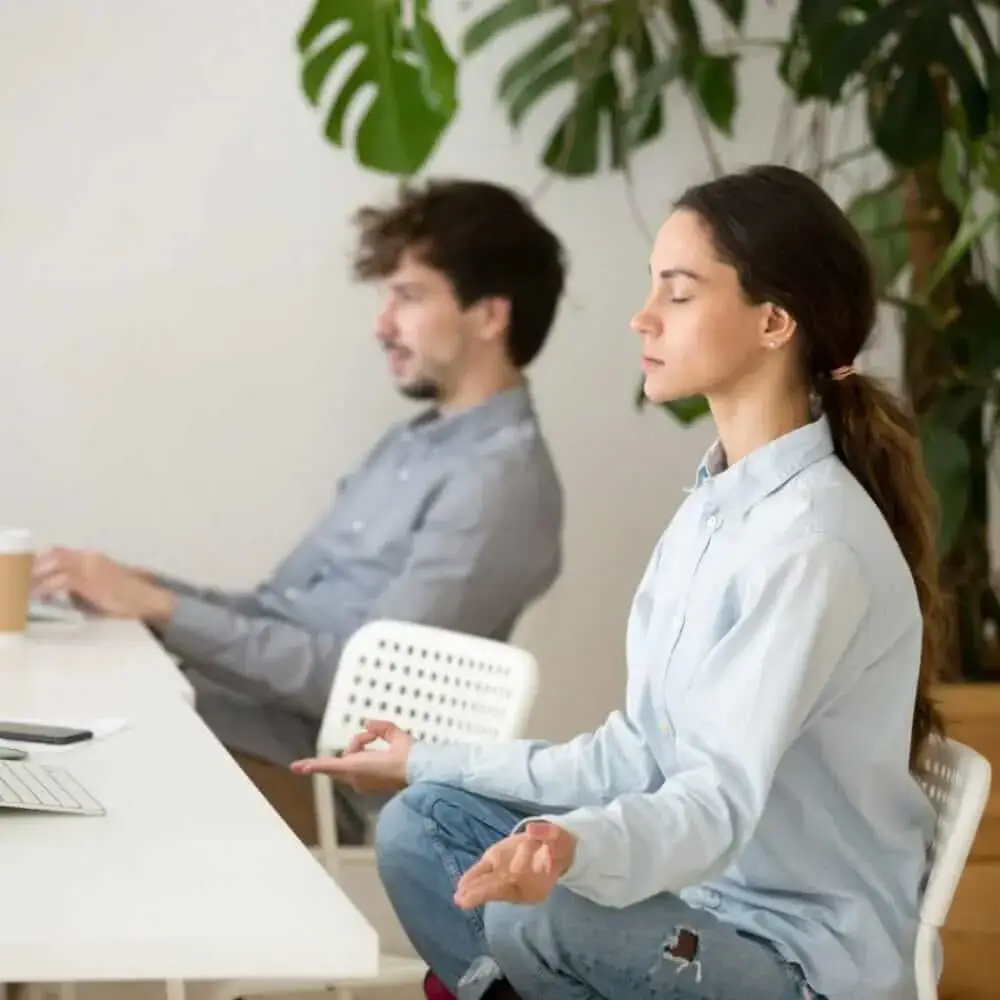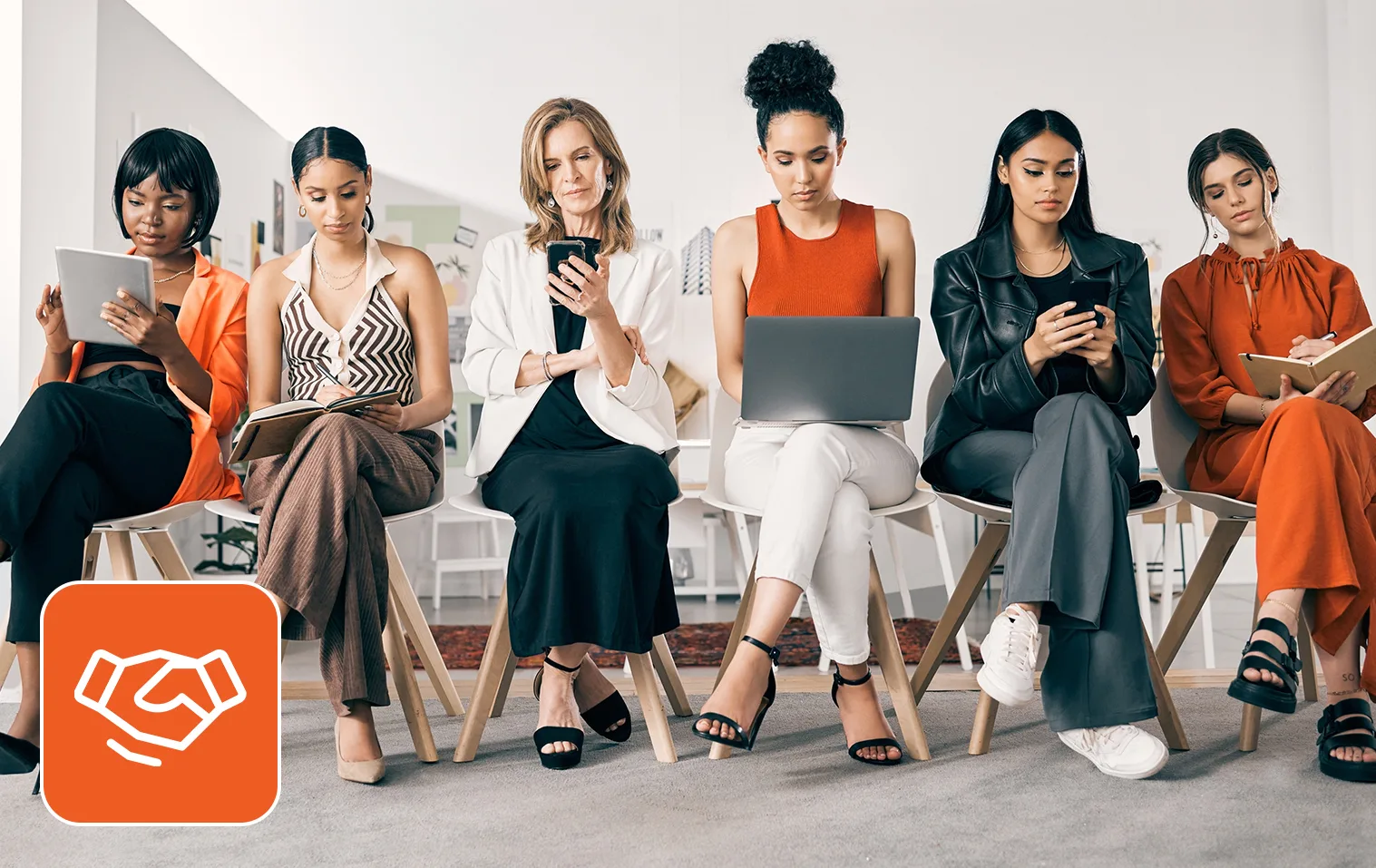Key Points:
- Mindfulness is a stress-reducing method used in and out of the workplace.
- SPECTRAFORCE Wellness Manager, Sapna Bulchandani, discusses how you can bring mindfulness for overall mental health in the workplace.
- Sapna shares applications you can use daily to achieve mindfulness and optimal productivity.
There’s a keyword in the wellness community that many are holding on to right now – mindfulness. Mindfulness is a stress-reducing method to keep an individual in the present. Mindfulness may be trending in the U.S., but this technique has been practiced for thousands of years. Mindfulness practices reap many benefits like awareness, increased focus, reduced anxiety, less emotional reactivity, and improved cognitive flexibility. All of these benefits can be very instrumental in the workplace.
To learn more about how you can use mindfulness in the workplace, we interviewed SPECTRAFORCE’s Wellness Manager, Sapna Bulchandani. Sapna has had a background in psychology for 8+ years and transitioned to bringing overall wellness to employees over the past few years. Her overall goal is to make sure everyone can find a balance at work and maintain a healthy mental space.
Can you share why mindfulness is essential?
Sapna: Wellness is defined in various ways depending on whom you talk to and typically includes a few areas in your life, including social, emotional, financial, etc. However, I look into four different regions; the mind, body, sense of belonging, and purpose. All four of these areas affect an individual’s wellness and mental health. Examples of taking care of these areas would be eating the right nutritious foods, sleeping, having time to unwind, etc.

What if you become overwhelmed in an environment that isn’t at home?
Sapna: An excellent method that engages all of your senses to remain present. For example, you can start by finding an object in your current environment. Then, admire the colors, feel the object, listen to it, and imagine the taste of the thing. You are taking yourself out of the moment and slowing down to stay present. This is a method that can take a total of 5 minutes.
Everyone has a different way of releasing negative energy. What if someone isn’t aware of the best method for them?
Sapna: A great way to begin is to analyze what areas give you negative energy. For instance, if your desk brings negative feelings from previous experiences, it’s simply taking time away from that area and finding a space that brings positivity or creativity. Try finding what spaces or objects bring you happiness. The new place could be a walk outside or a corner of your house you can disconnect.
Is there a recommended time in the day to create mindfulness?
Sapna: A schedule can make an enormous impact so that you can schedule a personal time to reflect and develop mindfulness. First, you want to identify your patterns before beginning a schedule. Next, set expectations with yourself, and start your self-care. With that said, everyone’s schedule is different. The overall goal for everyone is to bring gentle reminders that work with your productivity. Some people enjoy those gentle reminders through notifications from their phone, email, or smartwatch that remind them to take a break, hydrate, etc. However, some people don’t work well with notifications, and it’s best to have a visual like a post-it note or even water in front of you to hydrate when you have time. Once you’ve found a way to connect with yourself once a week, you can evaluate whether you can begin daily, weekly, or monthly.
Are there any specific applications or tools you recommend for those who prefer notifications?
Sapna: I have two favorite applications for moments of mindfulness. One of my favorites is Tut’s website which sends you emails from “the universe.” The messages depend on the information that you provide is your focus for the present and future. If you’re not a fan of constant reminders, this is a simple daily email to offer you a moment of mindfulness. An app called 21 Days Challenge also allows you to challenge yourself with various self-care methods like social media detox, productivity, gratitude, etc.
Mindfulness is unique to the individual but applies to all. The remaining presence allows us to slow down and have perspective. When beginning your journey in mindfulness, journaling your progress can help you evaluate, whether weekly or monthly. Over time you may see the cognitive flexibility or less emotional reactivity you were searching for. For more articles like this, check out our blog here.
Resources:
https://positivepsychology.com/history-of-mindfulness/
https://www.apa.org/monitor/2012/07-08/ce-corner#:~:text=Among%20its%20theorized%20benefits%20are,with%20kindness%2C%20acceptance%20and%20compassion



